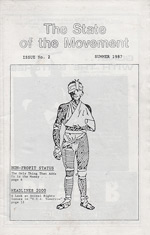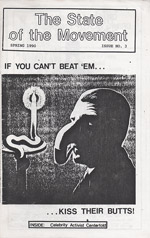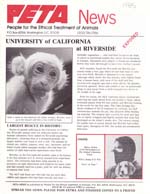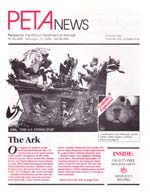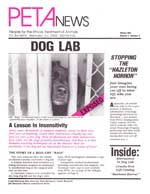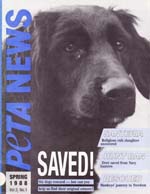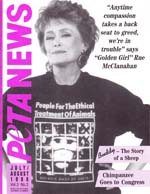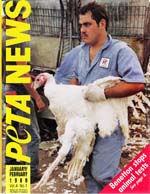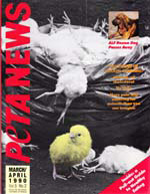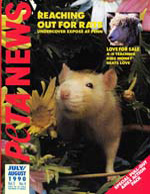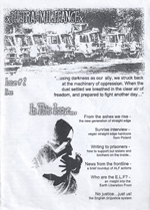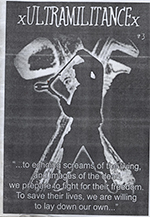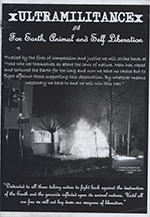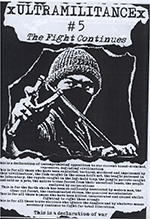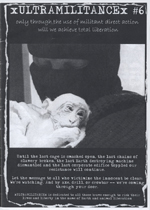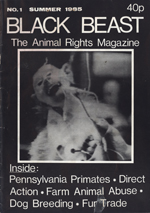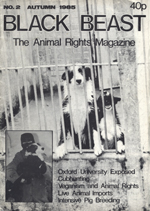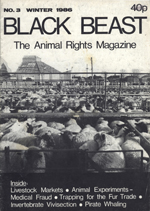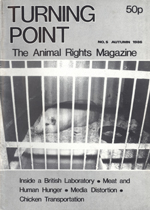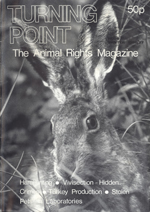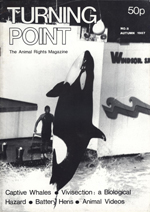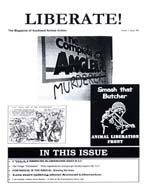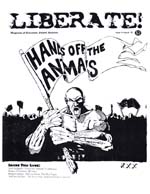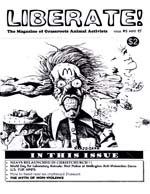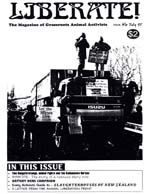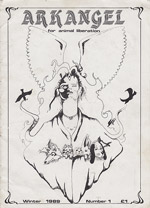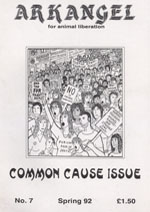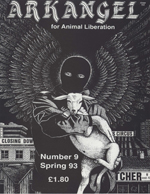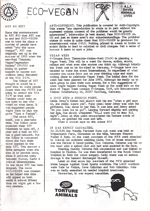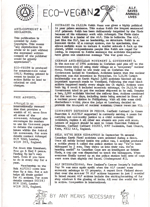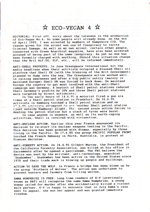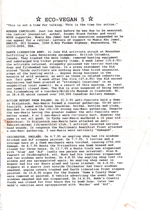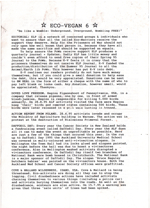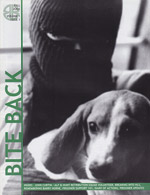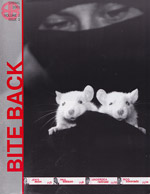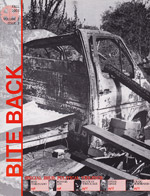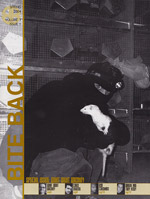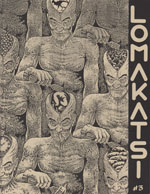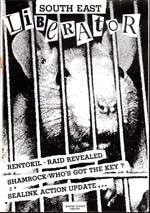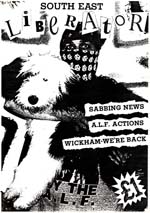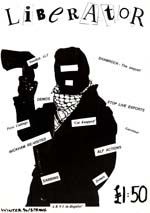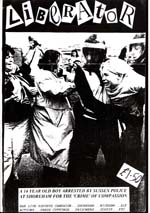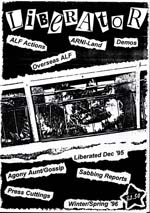The 1980s was a time of explosive popularity in the animal rights movement, and initially, that boom brought together some very unlikely people. Celebrities like Bob Barker held meetings where Rod Coronado would be seated next to the heads of welfare groups. Mass marches took place in cities all across the United States, with tens of thousands of people participating in demonstration on major days such as World Day for Animals in Laboratories and Fur Free Friday. But amidst all this activity, the con artists and career builders were lurking. The tremendous potential for fund raising also meant a corollary potential for salaries, and after a while, the mainstream groups had well-paid executives who wanted to do anything they could to avoid offending their donor base. The philosophy of the movement was weakened as calls for the abolition of vivisection became calls to stop using “pound seized pets” in experiments. Activists who had once loudly supported direct action began whispering supportive words to militants in one breath and then denouncing them to the media in another. Compromise spread like melted soy margarine and soon the whole movement was covered in the oily goo of half-assery! Amidst this rush to mediocrity, State of the Movement mercilessly mocked those who were selling the animals futures down the drain.
Periodicals (Page 2)
PETA News: the radical years.
PETA News, Various issues (1985-1990. Washington, D.C.)
“When questioned on Irish television about an action against a butcher shop, Morrissey, an avid vegetarian, was asked “What about the safety of the butchers?” Responded Morrissey, “When you think of the horror experienced by millions of animals in slaughterhouses each year, what’s a few butchers?” His song Meat Is Murder topped the charts in 1985.” PETA News Volume 3 #1
Imagine for a moment that a young animal rights activist with very little knowledge of the movement’s history finds a time machine and heads back into the early 1980s. Upon arrival they decide to get involved with a militant group and begin asking who they should join. At every turn they are told that PETA is the most militant group in the United States. This seems absurd to our young activist! “All PETA does is embarrass the movement with offensive ad campaigns and nudity! They are celebrity driven and devoid of substance, they kill healthy feral cats and don’t even have a rights based philosophy! They even demoted an employee for publicly supporting politically motivated arson!” Angered, our imaginary friend stomps into the DC area offices of the group to re-write history, and is shocked with what they find…
People for the Ethical Treatment of Animals experienced a meteoric rise in membership and notoriety in the early 1980’s as a direct result of their support for (and participation in) illegal direct action. Their relationship with the Animal Liberation Front was symbiotic: PETA provided the ALF with whistlebower information, credible spokespeople, and sympathetic coverage of raids. In return, PETA was placed in the media spotlight and received undercover footage and documents from the ALF that were often parlayed into high profile (and lucrative) campaigns. The atmosphere of popular militancy was exciting, and after years of slow progress people felt that supporting PETA meant backing a faster, more direct path to rights for non-humans.
PETA sold ALF support merchandise in their newsletters, ran a legal defense fund for people accused of unlawful activism, and helped popularize the concept of mischief in defense of animals. For example, PETA News sold squirt bottles of red permanent fabric ink alongside the warning that since the damage done to furs would be permanent, you should only spray the ink on your own furs! Articles talked about a likely apocryphal 15 year old who got grounded for passing out “Throw a Brick Through McDonald’s Day” pamphlets, and later chuckled as he got caught with paint bombs under his bed. Incidentally, the same article described how young “Kevin” made the paint bombs. These examples only just barely scratch the surface of the early militancy of Alex Pacheco and Ingrid Newkirk’s fledgling organization.
The story of animal rights in the United States can not be told without a thorough examination of the early days of PETA, an era sure to shock newcomers. In the coming months we will begin a more in depth analysis of their early days, but in the meantime jump into the time machine and prepare to have your mind blown by these early issues of PETA News.
The Complete X Ultra-Militance X
X Ultra-Militance X 1-6 (2003-2004. Hampshire, England)
Black Beast / Turning Point
Black Beast 1-3 / Turning Point 5-8 (1985-1987. Oxford, UK)
We are still seeking additional issues Turning Point. If you have them- or other publications of note- please contact us!
The Complete Liberate!
Liberate! 1-7 (1996-1997. Birkenhead, New Zealand)
Liberate! was written by a small group of dedicated activists. The content may have been produced by amateurs but there are some stand out articles about the burgeoning pro-direct action grassroots, conflicts between environmentalists and animal liberationists, and some entertaining imagery as well.
Arkangel
Arkangel 1-5, 7-11 (1989-1994. London, England)
Vivien Smith, whom I had previously worked with in publishing the ALF Supporters Group newsletter, had recently been released from prison and we teamed up again to produce the first issue of Arkangel, with me doing most of the writing and Viv typing it out and putting it together with artwork to create the magazine.
The second issue was produced in a similar fashion but, after that, everything had to change, as the prison stopped me from sending out articles, following complaints from the vivisection industry, and Viv was put in prison again for ALF actions.
The omission of issue #6 is not an error- it was never printed. Arkangel’s offices were raided just before publication of the issue. We are still seeking additional issues of Arkangel. If you have them- or other publications of note- please contact us!
Eco-Vegan
Eco-Vegan 1-6 and Special 1 (1994-1995. London, England)
Molland was also an editor at Green Anarchist, which was a frequent target of police harassment. After a series of raids known as “Operation Washington,” he was arrested and charged in the infamous GAndALF trial. The arrest eventually resulted in the end of Eco-Vegan, but Noel continued to work on behalf of earth and animal prisoners.
We are still seeking additional issues of Eco-Vegan. If you have them- or other publications of note- please contact us!
Bite Back
Bite Back 1-10 (2002-2006. West Palm Beach, FL USA)
“Bite Back was formed in 2002 to give voice to activists who choose to break the law to help animals, and to feed an animal rights movement hungry for news about non-violent direct action. Our goal was to produce a magazine that was professional looking, creative and exciting.
In the years since our first issue, we’ve shipped the magazine to activists around the world, posted close to 4,000 reports of actions on our website, fought back lawsuits by some of the largest corporations in the world, and raised thousands of dollars to support animal rights prisoners of conscience.
Bite Back reports news often not found anywhere else. We hope our work is both inspirational to those who seek a more humane world, and unnerving to those who seek profit through exploitation and terror.
Bite Back is an all-volunteer organization.”
The Complete Lomakatsi
Lomakatsi 1-4 (1987-1989. Washington, DC)
Taking the Hopi word for “Life in Balance,” a small collective of artists and activists set out to reject the dominant themes running through other, tamer publications. More than that, they started a project to live communally on a small parcel of land and experiment with more sustainable, less technological ways of living. By sharing their space with each other, and their thoughts with the world, the rebels continued to have an impact on the direction of the movement.
During it’s short life, Lomakatsi circulated about 1,000 copies per issue, introduced anti-civilization themes to AR folks through articles by John Zerzan, (And a letter from Feral Faun in one issue!) and stirred up plenty of controversy. Each issue contained DIY instructions for sabotage, oddball illustrations and comics, and advocacy for some ideas that were challenging to say the least. Their intentional community eventually stopped producing a journal, but those following animal liberation history will certainly see the influence that Lomakatsi had on our movement’s dialogue as we moved into the 1990s.
South East Liberator
South East Liberator (Various issues. 1992 – 1996. West Sussex, England)
South East Liberator was angry, over-the-top, and compiled by front-line activists giving their all for animal liberation. We are seeking the complete collection. These copies were donated along with an introduction from one of the original contributors:
“The Liberator was produced in the ‘90’s by a small group of determined animal rights activists to publicize how much could be achieved by working quietly within a close knit group, and to encourage like minded people to carry out similar actions.
Economic sabotage will always be one of the most effective ways of hitting the abusers where it hurts them most and we, along with other similar groups throughout the country, were proving this time and again.
Liberations, bombings, arson attacks, massive damage to property and vehicles and general sabotage were carried out week after week, with the cops going round in circles!
Thousands of lives were eventually saved through liberations and hellholes closing. Many many hundred of thousands of pounds worth of damage was caused along the way.
Inevitably there were arrests and imprisonment but nobody who was totally involved then, for the right reasons, would say that they had any regrets for any of their actions. Many of us are still involved in the fight for animal liberation and always will be.
Personally the only regret I have is that I’ve never done enough to save enough lives. Oh, and getting caught of course!!”
-Anon
We are still seeking additional issues of South East Liberator. If you have them- or other publications of note- please contact us!


